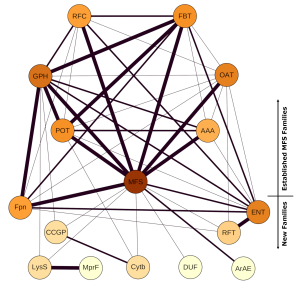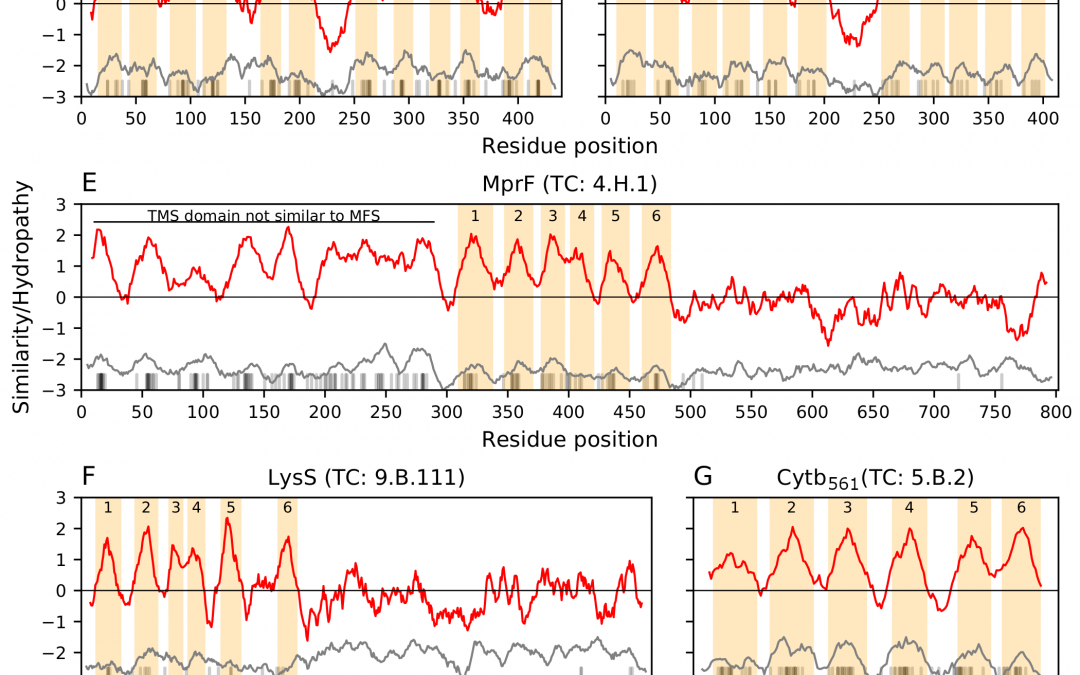Grad students S. C. Wang, P. Davejan, K. J. Hendargo, I. Javadi-Razaz, Amy Chou, D. C. Yee, F. Ghazi, K. J. K. Lam, A. M. Conn, A. Madrigal, Dr. Medrano-Soto and Dr. Saier just published a paper in the journal Biochimica et Biophysica Acta (BBA) – Biomembranes about the expansion of the MFS Superfamily. The title is: “Expansion of the Major Facilitator Superfamily (MFS) to include novel transporters as well as transmembrane-acting enzymes“. For your convenience, this is the link to PubMed.
Abstract
The Major Facilitator Superfamily (MFS) is currently the largest characterized superfamily of transmembrane secondary transport proteins. Its diverse members are found in essentially all organisms in the biosphere and function by uniport, symport, and/or antiport mechanisms. In 1993 we first named and described the MFS which then consisted of 5 previously known families that had not been known to be related, and by 2012 we had identified a total of 74 families, classified phylogenetically within the MFS, all of which included only transport proteins. This superfamily has since expanded to 89 families, all included under TC# 2.A.1, and a few transporter families outside of TC# 2.A.1 were identified as members of the MFS. In this study, we assign nine previously unclassified protein families in the Transporter Classification Database (TCDB; http://www.tcdb.org) to the MFS based on multiple criteria and bioinformatic methodologies. In addition, we find integral membrane domains distantly related to partial or full-length MFS permeases in Lysyl tRNA Synthases (TC# 9.B.111), Lysylphosphatidyl Glycerol Synthases (TC# 4.H.1), and cytochrome b561 transmembrane electron carriers (TC# 5.B.2). Sequence alignments, overlap of hydropathy plots, compatibility of repeat units, similarity of complexity profiles of transmembrane segments, shared protein domains and 3D structural similarities between transport proteins were analyzed to assist in inferring homology. The MFS now includes 105 families.



